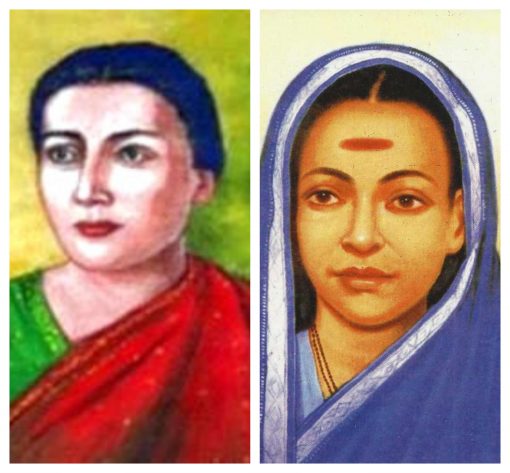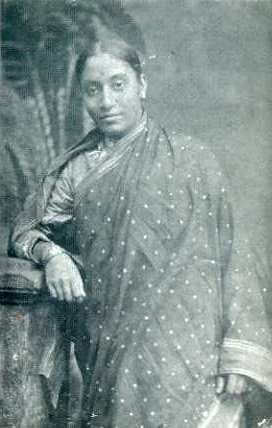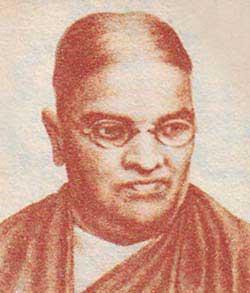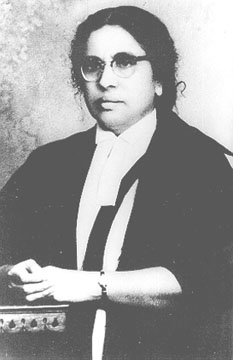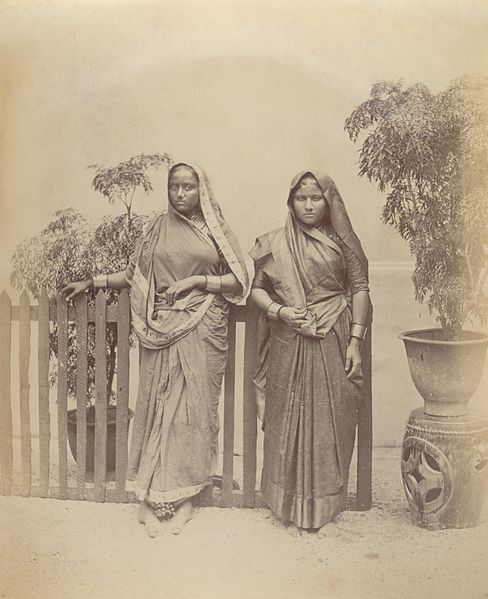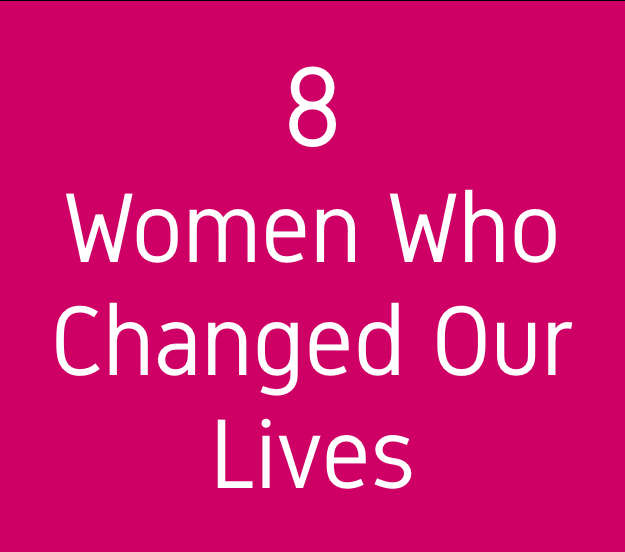
8 Women Who Changed Our Lives
A pack of eight trailblazing women who changed the lives of women in India and abroad
India is a country where women have often been considered unequal to men. Today’s modern India is nothing like what it was 150 years ago.
The society firmly believed that women were not meant to be educated, never meant to work and of course never have a life beyond their family.
These strict rules were imposed not only by societal norms but were also intelligently intertwined with religion by influential patriarchs. Thankfully for us, a few women burst these norms, breaking the shackles every daughter of India was born with.
This week, for women’s day and women’s month, let us acknowledge these 8 women who changed our lives.
Tarabai Shinde
Tarabai Shinde was born in Buldhana district in British India.
In the 1850s, like other women she was expected to marry and spend her life within the confines of her house.
Bapuji Hari Shinde, Tarabai’s father decided to educate his daughter till she lived in his house. He taught her Marathi which was the Shinde’s mother tongue, along with the ancient language of Sanskrit and the language of India’s masters, English.
Picture Credits
This early foundation might have created a lasting impact on Tarabai. Education, like it always does, gave her thoughts and a well-versed mind to put them into immortal words.
The social system all together didn’t evade Tarabai. As planned, she was married young to a man who moved into her father’s house. Generally in Indian society, a bride moves in with her husband’s family. Her husband was called ‘gharjavi’ translated to ‘The son-in-law who stays with his in-laws’.
Tarabai’s early education was put to good use when she read about an orthodox, rude article in the Pune Vaibhav newspaper. This newspaper was known to be a regressive paper who shunned women’s empowerment and social equality.
This article was about a widow in Surat, Gujarat who had aborted her child. Women’s rights in the 19th century India were next to non-existent and widows had no rights at all. The actual condition of this woman is unknown. However Tarabai’s mind helped with her education began asking a few very important questions. Her questions were almost unheard of at that time.
As a response to this article in the Pune Vaibhav, Tarabai wrote almost a 50 page long essay called Saree Purush Tulana (Women-Men Comparison). Her essay asked critical questions and ridiculed the way society thought of women.
In her essay she questioned why widowers could re-marry whilst widowed women were compulsorily made to sit at home, shave their heads and wear plain white or dark red saris. The essay harped on widows and their plight in society.
“What’s good for a man ought to be good for woman as well”
Tarabai Shinde
Stree Purush Tulana was one of the first essay’s in the world that questioned the dissimilarity between men and women’s rights. It was almost 100 years later that the most revered feminist essay ‘Le Deuxième Sexe’ was published by Simone de Beauvior in France.
Tarabai was one of the first women to initiate the important conversation about women in society.
Savitribai Phule
It is impossible to miss Savitribai Phule when talking about women’s education in India. In Maharashtra, Savitribai Phule is a household name. She still stands tall in almost every school and college corridor.
Savitribai and her husband, Jyotirao Phule contributed their entire lives to the upliftment of the deprived people in society.
Jyotirao Phule educated his young wife and asked her to support him in his endeavour to educate girls in India. For a man to teach girls and other women was an impossible task in the orthodox society but it was possible for a woman to do so.
Savitribai Phule wholeheartedly supported her husband and went a step or two beyond what his dreams were.
Picture Credits
They began a school for girls and the Satyashodhak Samaj, a community for the neglected sections of the society including the ‘lowest caste’ and widows.
Savitribai became the principal of her school and would personally go from house to house asking parents to send their daughters to school.
Most people not only refused but tried to deter her from her endeavour. People threw mud on Savitribai, mobbed her and called her names when she’d walk to school. Savitribai would carry an additional saree with her. She would use this saree when the one she was wearing got soiled with mud.
Savitribai’s other project was the Satyashodhak Samaj (community) which worked for underprivileged people including widows. Tarabai Shinde was a part of this community as well.
I remember the literary paragraph we had in school about Savitribai and her heroic life. The chapter explained how Savitribai broke with custom and performed her husband’s last rites herself. Traditionally and even in most of 21st century India, a deceased person’s last rites are to be performed by a male member of the family i.e.a son, a son-in-law, a brother but never by a woman. What she did was unthinkable for her time.
After Jyotirao’s death, Savitribai continued her work for women. Her adopted son who became a doctor, helped her save underprivileged people from the Bubonic plague epidemic. It was while serving others that Savitribai Phule died. Her contribution shall never be forgotten by India.
Anandibai Joshi
Another Marathi woman to change Indian society drastically is Anandibai Joshi. Her life too was similar to other women of her time. She was married off to a man 20 years elder to her.
Anandibai’s husband, Gopalrao was a whimsical man. He was a widower himself and had decided on marrying a widow, something society considered blasphemous. Eventually he married a young Yamuna whose name became Anandibai after marriage.
Gopalrao taught his wife three languages, history, and geography. He is known to have been a very strict teacher often having extreme fits of rage.
At 14, Anandibai lost a 10 days old child. This extremely moving event changed her life. She decided to become a doctor and aid pregnant Indian women.
Picture Credits: Wikipedia Commons
Indian women from all backgrounds had no access to professional medical care in the 19th century. It was a vicious circle where male doctors couldn’t doctor female patients and western female doctors couldn’t understand what native Indian women were saying. Above all this, an Indian woman couldn’t even read or write let alone educating herself as a doctor to help others.
Anandibai supported by her husband, and discouraged by the entire country set out to become the first qualified female doctor in India.
Her dream took her to America and made her the first Indian woman to do so. Aged 18, she travelled alone and despite her poor health graduated to become the first female doctor in India.
Anandibai didn’t live a long life, her dream of saving other women never came true. I like to believe that Anandibai’s greatest legacy in her life was asserting to the Indian society and the world at large that a woman, despite all the problems standing before her can achieve whatever she desired.
“Had there been no difficulties and no thorns in the way, the man would have been in his primitive state and no progress made in civilisation and mental culture. “
Anandibai Joshi
Read More about Anandibai Joshi here
Rukhmabai Raut
Rukhmabai’s greatest contribution to Indian society and Britain at large was her self-belief.
At 11, Rukhmabai was married off to the 19 year old Dadaji Bhikaji. Till Rukhmabai came of age, she was to live with her parents and subsequently move in with her husband.
In the few years after her marriage and before turning 20, Rukhmabai gained an insatiable hunger for knowledge. She learnt a lot and wanted to feed her curious mind with intelligent conversations with well-educated people.
So when she realised her husband was a man who didn’t seek education and wasted time doing nothing, Rukhmabai refused to move in with him.
Dadaji Bhikaji threatened to make a case against Rukhmabai. She told him he was welcome to do so. Bhikaji appealed for the ‘restitution of conjugal rights.’
The Dadaji Bhikaji vs Rukhmabai, 1885 became the talk of the country and even made waves in Britain.
Picture Credits Via Wikipedia Commons
Rukhmabai refused to move in with her husband on the grounds that she was married off young and never asked whether she wanted to get into such a contract. She even agreed to go to jail.
Her case highlighted another buried case of an 11 year old who had died from abuse by her 35 year old husband.
The result of this 1885 case was the Age of Consent Act, 1891. This act didn’t make any difference in society but Rukhmabai’s case created an awareness about early marriages and women’s rights.
Rukhmabai went on to become a doctor and accomplished what Anandibai Joshi had sought out to do, becoming the first Indian woman to practise as a doctor.
Another Indian female doctor I’d like to mention was Dr.Kadambini Ganguly who graduated as a doctor herself in the 1880s and began her own practise.
“I am one of those unfortunate Hindu women whose hard luck it is to suffer the unnameable miseries entailed by the custom of early marriage. This wicked practice has destroyed the happiness of my life, It comes between me and the thing which I prize above all others-study and mental cultivation.”
Rukhmabai Raut
Pandita Ramabai
Pandita Ramabai had been raised by a father who believed in women’s education. She was well versed in Sanskrit and often gave lectures on women’s education.
During the famine, Ramabai lost her parents and her sister.
She then married a man from a lower caste. She was shunned by society and then made an outcast when her husband died a year later.
With just peanuts in her purse and a young daughter on her hips, Pandita Ramabai was left with nothing.
Anandibai Joshi sent the Pandita an invitation to live at her residence under the care of her and her husband. The Pandita refused but the two continued to be good pen friends.
Picture Credits Via Wikipedia Commons
Pandita Ramabai would then visit Anandibai’s historic graduation ceremony in America.
In her life, Pandita Ramabai converted to Christianity and often compared the vices that encouraged gender discrimination in Hinduism.
The Pandita sought education in the UK and the US too.
In India, she advocated women’s rights and education.
She also founded the Sharada Sadan, a place for widows to live and learn.
Pandita Ramabai’s book the ‘High Caste Hindu Woman’ sheds light on the horrible atrocities widows faced.
She died in 1922 but her contribution to society lives on in the lives of young women who graduate and seek a fulfilling career for themselves.
Cornelia Sorabji
A life of many firsts, that’s the best way to describe the life of Cornelia Sorabji.
Cornelia was born to a converted Christian father, Reverend Sorabji Karsedji and a Hindu mother who had been adopted by British parents, Francina Ford.
Her upbringing without a doubt was very varied. She learnt strong values from both faiths and cultures.
Besides this, the Sorabjis ran a school in Pune for women.
Cornelia decided to seek a higher education and enrolled herself in the Bombay University in Mumbai. She became the first woman to graduate from the university. Cornelia had done a Bachelor of Arts in English Literature.
Picture Credits Via Wikipedia Commons
After this, Cornelia set her sights on law. She cleared her examination from the Allahabad High Court in 1899. Despite this, she was not acknowledged as a barrister since she was a woman. Cornelia then set sail to Oxford and enrolled herself as a student of law.
Until 1922, Oxford didn’t give degrees to women. Women were allowed to attend class, sit exams and clear them with honours but never graduate to become a member of the University.
In India, the doors of colonial courts were closed for women.
Cornelia returned to India as an advocate but couldn’t practise. She then persuaded the government to allow female assistants in cases involving women.
Ultimately in 1923, women were allowed to work in the courts. From Kolkata, Cornelia could now practise her profession. The fight though was not just in the courts. She was often the only female in a male dominated world. There was a lot of bias and stigma.
Cornelia was quick to realise that her problems were not very different from others. She was extremely passionate about the ‘purdahnashins.’ These ‘purdahnashins’ were women who had to cover themselves under a veil, and not mingle in society.
Advocate Cornelia Sorabji represented these women for their property, education and employment.
Cornelia’s life was certainly eventful. I like to believe it was a life where she fought out pathways amongst the obstacles to achieve what she wanted and help other women.
Rama Ranade
Rama Ranade was the wife of Justice Mahadev Govind Ranade, a social reformer who advocated widow’s rights.
MG Ranade taught his wife Marathi, English, Geography, Indian History and Science. She also became his secretary. The two of them often discussed intellectual issues and the world news. What might seem trivial was indeed something unheard of in the 1870s.
Picture Credits Via Wikipedia Commons
Ramabai truly stepped into the women’s campaign around this time. She gave public speeches and was very well known for her engrossing and impressive talks.
She was a strong proponent of women’s education and widow’s rights. To help women in her city of Pune, Ramabai established the Pune branch of Seva Sadan. By the end of her life in 1924, more than a 1000 widows and girls had lived, worked and gotten educated there.
Ramabai also established, Huzurpaga, the first high school for girls in Pune.
In Maharashtra, Ramabai’s legacy runs deep. In her life of 60 years, she changed society’s outlook about women.
Justice Anna Chandy
This woman created waves across the world with her achievements.
Anna Chandy was born in Travancore, Kerala, India in 1904.
Kerala has a matriarchal society rather than a patriarchal one like most of India. This meant that the Royal family of Kerala was led by a woman, Maharani Sethu Lakshmi Bai.
The Queen passed a resolution opening the doors of the Government Law College to women. Anna was inspired. She registered in 1926 and graduated with a post graduate degree in Criminal Law three years later.
Picture Credits Via Wikipedia Commons
That same year, Anna got appointed to the junior Bar. This means, to my limited knowledge of law, that she could now sit on the benches in front of the Judge and not with the other common spectators.
1929 was a spectacular year for Anna. She also began the Shreemati magazine. This magazine was the first women’s magazine in Kerala. I found its contents very fascinating. Anna wrote about domestic topics as well as professional ones for a female audience. Her magazine might have been a peak into how a woman’s life had changed in the 1930s from merely a domestic one to an all encompassing professional yet domestic one.
Shreemati magazine voiced out modern pain points like gender pay gap and even women’s reproductive rights.
In 1931, she stood for the Sree Moolam Popular Assembly elections. Her opponent made false accusations on Anna about her being a woman of loose morals. Two years later, Anna stood yet again. She slammed her opponent for his false claims and won the elections.
Almost 30 years later in 1959, Anna Chandy became the first High Court Judge in India and the second in the entire Commonwealth established by the British. The first was Elizabeth Lane from England.
Anna Chandy’s life and her early attempts on making a magazine for the new woman are truly heroic.
These were a few great women from India. This is definitely not an exhaustive list but a mere precursor. If you noticed, most of these women worked together hand in hand. That is what I admire the most about all of these eight women. Their camaraderie was what led to their long-lasting success.
Who amongst these 8 women resonated with you the most? And who is your role model? Comment below
And of course Happy Women’s Day, Month….Year! Have a great one
Share ‘8 Women Who Changed Our Lives’ with at least one woman to inspire her:)
If you liked this article you might also like to read
The Lioness Who Scared the British: Rani Lakshmibai
9 Pioneering Women in the Creative Industry
Most Inspirational Women in the World





